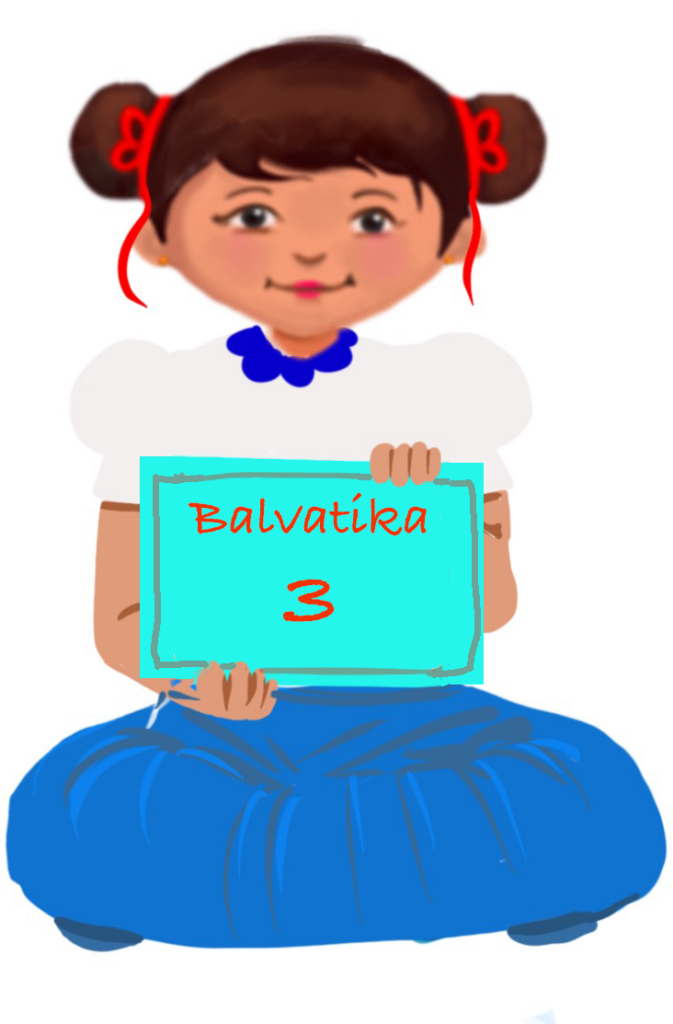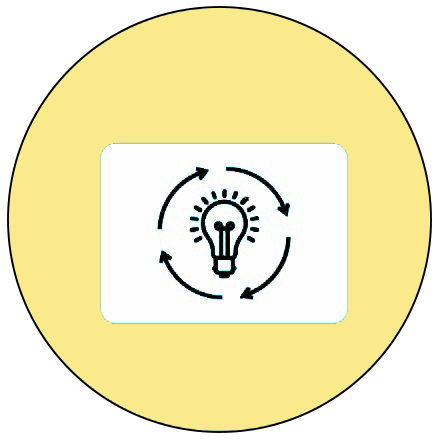
Pre-number Skills
Week 4 – Sequencing Skills
Learning Outcome
Observes, remembers, recalls and categorise the things they see in a sequence.
 Objective
Objective
Children will analyse, categorise and organise information in a meaningful sequence.
 Prerequisites
Prerequisites
● Children should be able to identify the daily activities.
● The teacher can have a simple check for understanding the entry knowledge of the children at the beginning of the lesson by asking them to say certain daily activities they know and the steps to do them.
 Pre-teach Vocabulary
Pre-teach Vocabulary
first, next, then and last.
Introduction
Resources required:
- A notebook and a pencil.
- The teacher asks the children to draw a sleeping line in their notebooks.
- Children follow the instructions and draw a line in their notebook.
- The teacher explains the steps followed to complete the instructions.
- For example, the teacher says, “Let us look at the steps you performed to complete the task. The steps are:
- Take out the notebook and pencil from your bag.
- Open the notebook.
- Pick up the pencil to draw.
- Draw the line.
All the steps are related and help to complete the task.
- First: Take out the notebook and pencil from your bag.
- Next: Open the notebook.
- Then: Pick up the pencil to draw.
- Last: Draw the line.
Some picture cards are shown, which will help the teacher explain to the children what are the steps involved in doing a task.
To show the sequence,
- Certain pictures like kicking a football (pick the ball, place it on the ground, face the goal, and kick; the ball goes straight into the goal post).
- Wash the fruits or vegetables (place the fruits or vegetables in a container, fill it with fresh water, add baking soda to it, leave it for 5 minutes, then gently wash each vegetable or fruit under flowing water and place them on a plate to drain off the excess water) can be used.
Picture cards: Kicking the ball
Picture cards: Washing fruits
After explaining the sequence of the activities, the teacher may say, “Children, let’s find out the sequence of the following tasks. There can be more than four steps to complete a task.”
The class can then be divided into groups of two children each.
Each group is given a task from day-to-day activities like:
- Washing hands
- Applying lotion on your face and hands
To promote social skills and engagement, the teacher may ask each group to tell the other groups how the task is done.
Video: Introduction to sequencing – Washing hands
ISL Video: Introduction to sequencing – Washing hands
Video: Introduction to sequencing – Applying lotion
ISL Video: Introduction to sequencing – Applying lotion
Picture cards: Washing hands
Picture cards: Applying lotion
Activity 1: Making Lemonade
Aim:
To follow the sequence of steps to prepare lemonade.
Importance of the activity for children:
Helps in developing:
- Gross motor skills (moving around)
- Fine motor skills (Pouring, squeezing, stirring, and other actions involved in making lemonade)
- Cognitive skills (recognising the order of certain actions to be performed )
- Social skills (interaction and team work)
- Communication skills (discussions among the children)
- Language skills (names of ingredients to be used in lemonade preparation)
Resources required:
Lemon juice, a bottle of water, sugar, salt, tumbler, and spoon.
Setting for the activity:
The activity can be done indoors or outdoors, depending on the availability of space.
Type of activity: Pair activity or group activity
Preparation of activity:
The teacher provides all the required materials for the commencement of the activity.
Role of the teacher: Demonstrator and facilitator
Procedure:
- Different ingredients for preparing lemonade are placed on the table.
- The children will identify different ingredients.
- The children will work in pairs or groups to prepare the lemonade as per the instructions given by the teacher.
- The first step would be to take a tumbler and fill it with water from the water bottle.
- Then add sugar (as instructed) to it and mix it with a spoon slowly, avoiding any spillage.
- This is followed by adding a pinch of salt and lemon juice.
- All the ingredients must be mixed well.
- To make the activity more interesting, the teacher can also do it with other children.
- Children serve the lemonade with the help of the teacher to friends or to the helpers in their school.
Refer to ‘Sequencing skills’ and ‘Organisational skills’ Adaptations and Strategies given in the Main page of ‘Pre-number Skills’ if there are any neuro-diverse children in the class.
Observation:
The children are made to observe the result of the activity as follows:
- The teacher may first show that they need to fill the tumbler carefully with water from the bottle without spilling it.
- While preparing the lemonade, the teacher may observe if the steps followed by the children are in the correct sequence or not.
- Then the children may be asked to say the different steps followed by him or her during the activity.
The teacher can note down his or her observations and guide the children accordingly.
Suggested variation in activity:
- The teacher can start the activity with a sequence of steps to make lemonade.
- Difficulty level can be increased by asking the children to replace lemon juice with orange juice.
Conclusion:
Children would be able to sequence the activities in the making of lemonade in the correct order.
Video: Making lemonade
ISL Video: Making lemonade
Picture cards: Making lemonade
Activity 2: Preparing chatpata Sprouted Moong Dal mix
Aim:
To follow the sequence of steps to prepare chatpata dal mix.
Importance of the activity for children:
Helps in developing:
- Gross motor skills (moving around)
- Fine motor skills (Manipulating ingredients, measuring, mixing, and pouring)
- Cognitive skills (recognising the order of certain actions to be performed, recall information)
- Social skills (interaction and team work)
- Communication skills (discussions among the children)
- Language skills (names of ingredients to be used in chatpata preparation)
- Application skills ( preparation of chatpata in a team)
- Memory skills (recall the steps while engaged in preparation of chatpata)
Resources required:
- Sprouted moong dal, lemon juice, salt, chaat masala, finely chopped onion, finely chopped tomatoes, grated coconut, spoon, and finely chopped coriander leaves.
- Different kinds of cups and utensils for keeping the ingredients separately.
Setting for the activity:
The activity can be done indoors or outdoors, depending on the availability of space.
Type of activity: Pair activity
Preparation of activity:
The teacher provides all the ingredients by placing them in the order they need to be mixed.
Role of the teacher: Demonstrator and facilitator
Procedure:
- All the ingredients are placed on the table in front of the children.
- The children are asked to put sprouted moong dal in the bowl.
- The children are then asked to put the chopped onions and chopped pieces of tomatoes in the bowl containing dal. Next, they should mix them all.
- This is followed by adding grated coconut, lemon juice, a pinch of salt, and chaat masala.
- The children should mix all the ingredients thoroughly.
- In the end, they evenly distribute the mixed ingredients into two small bowls and garnish them with chopped coriander leaves.
- To make the activity more interesting, the teacher can also do it with the children.
Refer to ‘Sequencing skills’ and ‘Organisational skills’ Adaptations and Strategies given in the Main page of ‘Pre-number Skills’ if there are any neuro-diverse children in the class.
Observation:
The children are made to observe the result of the activity as follows:
- The teacher may show different steps followed in the activity through flash cards.
- Then the children may be asked to arrange the flash cards into a “sequence.”
The teacher can note down his or her observations and guide the children accordingly.
Suggested variation in the activity:
- The teacher can start the activity with a demonstration of how to arrange the sequence with flash cards.
- The difficulty level can be increased by increasing the number of ingredients or steps in a task.
Conclusion:
Children can understand and learn the order of events in the processes involved.
Video: Chatpata sprouted moong daal mix
ISL Video: Chatpata sprouted moong daal mix
Picture cards: Chatpata moong dal mix
Activity 3: Sequence the Story – ‘Good Morning, Nano!’
Aim:
Children are able to arrange pictures of the story or retell it in their own words, focusing on the sequence of events.
Importance of the activity for children:
Helps in developing:
- Gross motor skills (moving around)
- Fine motor skills (picking and placing the picture cards)
- Cognitive skills (listening, recalling the sequence)
- Social skills (interaction and team work)
- Communication skills (discussions among the children)
- Language skills (new words that occur in the story)
- Memory skills (recall the steps while engaged in preparation of chatpata)
- Value development (getting up early, be on time, pray, listen to elders)
Resources required:
- A chart with pocket holders, labelled as first, next, then, last.
- Flash cards of the story
Setting for the activity:
The activity can be done indoors.
Type of activity: Group activity
Preparation of activity:
- Images related to the story are made and distributed to the children.
- A chart for the story is put up on the board.
Role of the teacher: Demonstrator and facilitator.
Procedure:
- The teacher would tell the short story once and ask the children to listen carefully.
- The teacher repeats the story and then asks the children holding the picture cards to come in front to place the cards in sequence.
- The children can place the pictures based on the occurrence of the events.
- Once the story is put up, the children can narrate it in their own words.
- The teacher gives a break activity where other children can also come and narrate the story to their peers.
Observation:
The children are made to observe the result of the activity as follows:
- The children may be asked to stand in the correct order of sequence with flash card images. The teacher should ask if the order is fine and good to go. The answer too may be given after eliciting the response from them, saying, “Yes, the order is correct.”
- The teacher can note down his/her observations and guide the children accordingly. For example, if the child is still confused as to where to put the flash card, she can help the child by demonstrating or using yes/no observations.
The same may be repeated for other stories and rhymes collected by the teacher and her children.
Suggested variation in the activity:
- Teacher can start the activity by making the children enact the story.
- The flashcards can be put into a box and shuffled; each child should pick a flashcard and place them according to the sequence.
- To make the activity more interesting, teachers can stick the card to the dress.
- The children will search for the correct picture according to the sequence.
- Later, they will stand in the sequence of the story.
Conclusion:
Children would learn to arrange the flash cards in the correct sequence. They would also learn the vocabulary of first, next, then, and last.
Video: Good morning, Nano!
ISL Video: Good morning, Nano!
Story picture cards: Good morning, Nano!
Check list for teacher:
| Activity | Yes | No | Sometimes |
| Children can: | |||
| Analyse, categorise and organise information in a meaningful sequence | |||
| Remember and recall the sequence of activities in making lemonade and chatpata | |||
| Focus on the activity | |||
| Complete the activity in the given time | |||
| Do the activity independently | |||
| Able to express verbally and through actions, expressions or gestures |
Home Activity
Arranging the dining table for lunch or lunch setting with the help of cue cards.
Cross-Curricular Connection
- In the art class, the sequence of events in a task printed on a sheet can be coloured and cut into flash cards.
- In the general science class, the food value of lemonade, the importance of hand hygiene, and lunch at school sequences can be discussed.
- In physical education class, the sequences in game can be demonstrated and then children can play the game.
- In EVS class, sequence of certain daily activities like watering plants, going to bank, going to market can be discussed.
- In language class vocabulary building can be done in a play way method by asking the children to spell out the sequence of a few daily activities they do, like brushing the teeth, taking bath, sweeping and moping the floor etc.
Teacher Resource Document
| Source and Attribution of images: All images used in the above Assets and Aids are originally created. |
| This digital material has been developed by the Sri Sathya Sai Vidya Vahini Inclusive Education Project, a unit of Sri Sathya Sai Central Trust, Prasanthi Nilayam, as a collaborative offering in the service of our nation. |